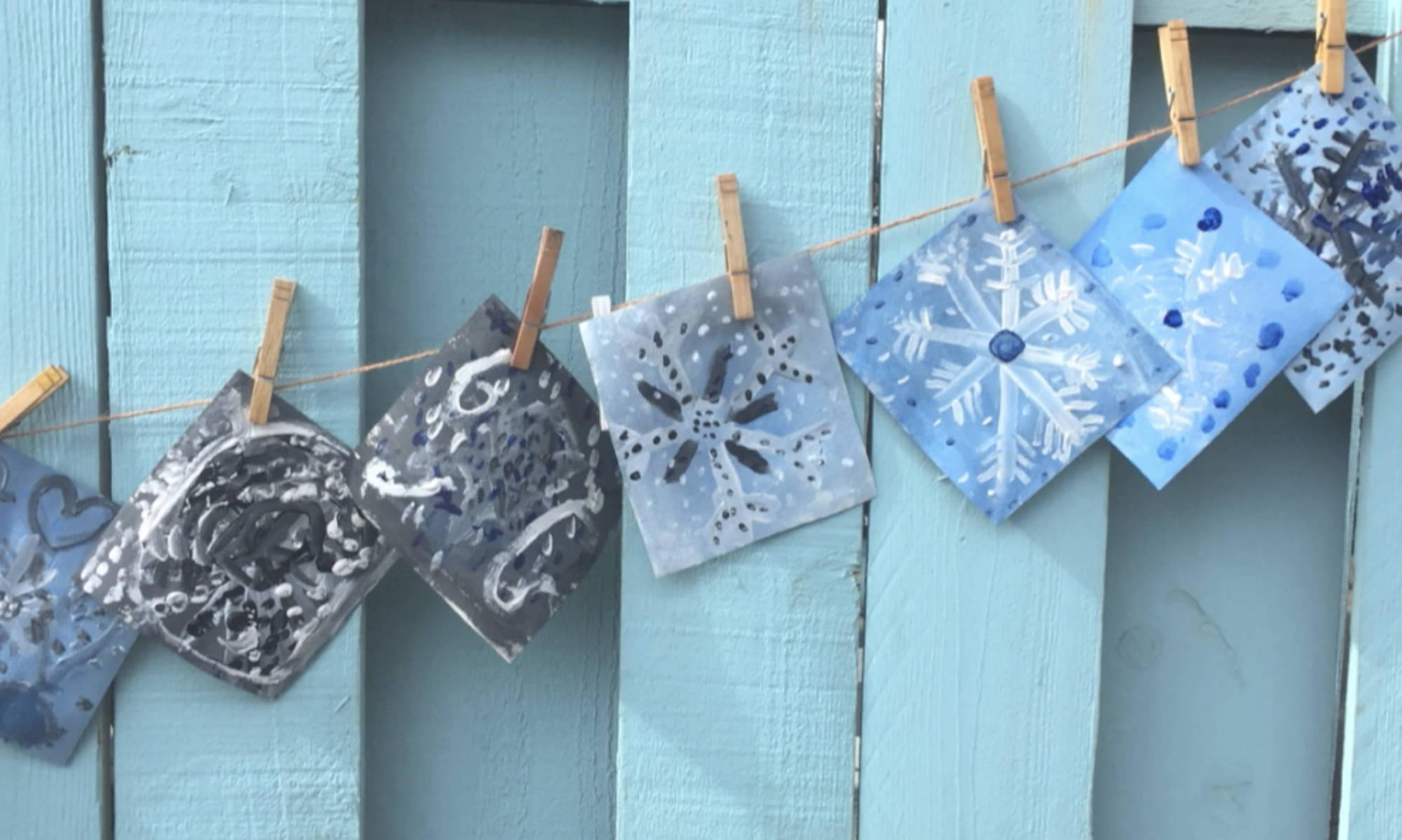
I’ve spent years and years researching and observing how children learn art, and what I’ve found is that children are able to grasp different artistic skills at different planes. In this new blog series, I’ll be sharing my insight on the art teaching methods that work for each age group of Montessori students.
Children of all ages can be taught visual arts and be guided through the artistic process. Each developmental phase requires different teaching styles and approaches.
Below you’ll find a general arts literacy guide for Montessori Lower Elementary ages following the International Standards for the Arts Education & Sensory Visual Arts method that aligns with a child’s growth – Nature of Art®.
Montessori Lower Elementary Art Teaching Methods Resources
If you would like to understand more about which types of art projects children can work on, register for my free video course, Phases of Arts Development, which discusses teaching methods for Lower Elementary Montessori students (ages 7-9).
You can learn about Art Literacy Standards and the benefits of visual arts by reading Defining Visual Arts (paperback book).
Get more information on how to bring art lessons into the Montessori classroom by reading Introducing Visual Arts into the Montessori Classroom (paperback book).

If you would like to understand more about the phases of art development, register for this free mini digital course.

Lower Elementary, Ages 7-9, Montessori Visual Arts Teaching Curriculum
Children at the lower L, age can do a number of different types of art projects. They can conjure up their own ideas and imaginative creations. Montessori lower elementary students can now plan with intention and think their ideas through to completion, going through the four steps of the artistic process.
At this age, students love to explore and discover what results different art mediums can produce. They encounter visual arts and Montessori art projects with lots of curiosity and a willingness to try different techniques.
Stretching Students’ Art Skills
Children can follow simple guided-art instructions and remain focused on their work for up to 1.5 hours. However, it’s still important to keep projects simple, with just a few un-complicated steps. Montessori art projects should start to introduce line, shape, form, texture, color, and symmetrical balance ideas.
You can also start introducing your lower elementary Montessori students to art language and the Elements & Principles of Design. For more information, reference Defining Visual Arts to better understand art language for young children.
Students’ fine-motor skills are becoming more controlled due to all the activities in their day-to-day Montessori curriculum and academic studies. Drawing and painting can be done with higher levels of control. The most important thing to focus on is giving children tasks that will continue to develop their fine-motor skills.
Children in lower elementary also need lots of exploratory sessions that allow them to experiment with varied mediums and techniques. Children are now drawing and painting with a 2D perspective and can be introduced to texture.

Art-Teaching Methods for Lower Elementary
Based on my proprietary sensory art method, I recommend teaching Montessori art through a combination of three methods: process-based art, creative-mode, and simple copy-mode.
- Process-based art is about exploring and using their own imagination; it’s not necessarily focused on the child’s final piece of artwork.
- Creative mode gives children the opportunity to explore mediums and conjure up creative images based on their own imaginations, thoughts, and ideas.
- Copy mode refers to a systematic, step-by-step art instruction. Copy-mode should not be copy what you see in the image type lessons.
Lower Elementary Montessori Art Activities & Mediums
Here are some great Montessori Lower Elementary art projects for your students who are 7-9 years old, in the elementary grades. These types of art activities will help develop their fine motor control and small muscles in fingers and hands while teaching the Elements & Principles of Design. (You can find non-toxic, kid-friendly art supplies needed for these art activities at Nature of Art for Kids.)
- Drawing: crayons, color pencils, graphite pencil, oil pastels, etc.
- Painting: watercolor paints, tempera paints, acrylic paints, watercolor crayons, watercolor pencils etc.
- Color Theory: primary color mixing, dropper color mixing, etc.
- Clay Modeling: earth clay, non-harden plasticine clay, air-dry modeling clay, beeswax forming, etc.
- Crafts: paper folding, nature and paper collage, mosaic arrangements, sewing basics, wool felting, string weaving, nature crafting, 3D constructing, etc.
Learn more about Montessori art teaching methods for lower elementary and get some Montessori art projects ideas by registering for my FREE mini digital course, Phases of Art Development Video.
Sign-up to receive video
The Phases of Art Development is a quick digital course that explains how art making can help students develop their creativity, fine-motor skills, and focus. More importantly, I share what types of projects students at every age are capable of completing safely, and without making a mess.
Best of all—it’s free! To sign up for the course, click here.

All rights reserved © 2025, Nature of Art®
No part of this blog may be used or be reproduced in any manner whatsoever including reproducing, publishing, performing, and making any adaptions of the work – including translation into another foreign language without written permission except in the case of brief quotations embodied in critical articles and reviews. Nature of Art® Publishing P.O. Box 443 Solana Beach, California 92075.



